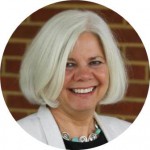I began teaching in 1975. The world I lived in was quite different and, at the same time, very similar to the world we all live in today. I remember learning how to thread a film projector and routinely botching that particular technology, which led to breaks in or a jumble of film piled on the floor. I also remember making copies of all kinds of textbook “supplemental materials” and tests using the duplicating machine. Finally, nothing rattled us as much as when the first computer landed in our school. I actually couldn’t find a video of it, but it was a Texas Instruments computer than ran from a cassette in a tape player. It was in the 1980s before we started to see a more high tech computer such as this one.
One thing I have learned across my career in education—as a teacher, building administrator, central office staff member, and now superintendent—is that tools change, furniture changes, curriculum changes, strategies change, and tests change. Yet, the constant that has stood the test of time is teachers who build relationships with young people, all young people, and see the assets and strengths in each learner we serve. This is as true of the teacher who works with seniors in high school as it is with the teacher who helps transition five-year-olds into kindergarten.
Relationships matter. Learning doesn’t happen in the absence of mutual trust and respect. Educators who commit to this profession, whether in the first or last year of our careers, learn that even when we are challenged the most to build a relationship with a learner, our belief that we make a difference and our willingness to keep searching to find a connection to a student are what matter most in terms of our success. Sometimes we make mistakes and we, like our learners, also can fail. However, it’s what we do to pick ourselves up and keep working to help children find success that provides them with a model for life as well as one for our colleagues, who all will struggle with success at some point.
No profession offers more to civilization than that of the educator. And, anyone in this profession—from our bus drivers to the superintendent—is ultimately a teacher. Our students observe us from the first moment when we greet them to the end of the day when we say goodbye. They know us as role models; caretakers; and a source for snacks and lunch money, the books they need, or help with math or history or the computer that glitches. We are guides, navigators, captains, coaches, and disciplinarians. We set boundaries and we determine when we need to move those a bit for certain circumstances.
I watch educators work every chance I get, because I learn from you and your students. Just yesterday, students at Monticello taught me how their new animatronic medical simulator Alex works. It goes without saying that a teacher stood at their side. In the afternoon, I had the chance to hear young Baker-Butler Elementary musicians share a Caribbean-inspired piece on their Orff instruments. I then had a chance to watch the Brownsville Elementary “Blue Puppies” Destination Imagination team share their creativity with the School Board at their meeting. Of course, there was a teacher there (from high school) who has helped grow and develop this opportunity for children all over our county.
You make a difference. The stories of our learners’ successes, from the student who goes to Stanford U to the graduate who enters the military or goes to work in a local auto repair shop, are your stories. Our community values our schools, and I hear that all the time. Whether it’s the League of Women Voters or a parent in a grocery store sharing a story about your impact on children, you are the reason that public schools exemplify the words on the Statue of Liberty. We take all children who come through our doors, and we work to our greatest capability to serve them well.
Thank you,
Pam
Pamela R. Moran, Ed.D.
Superintendent of Schools
